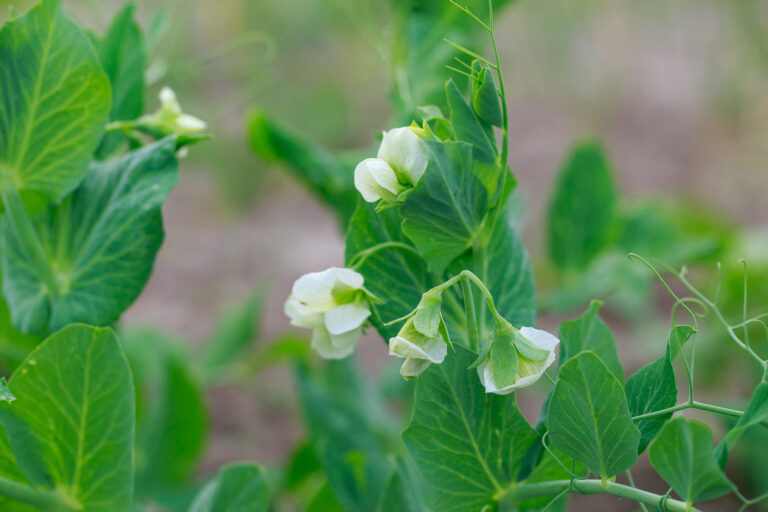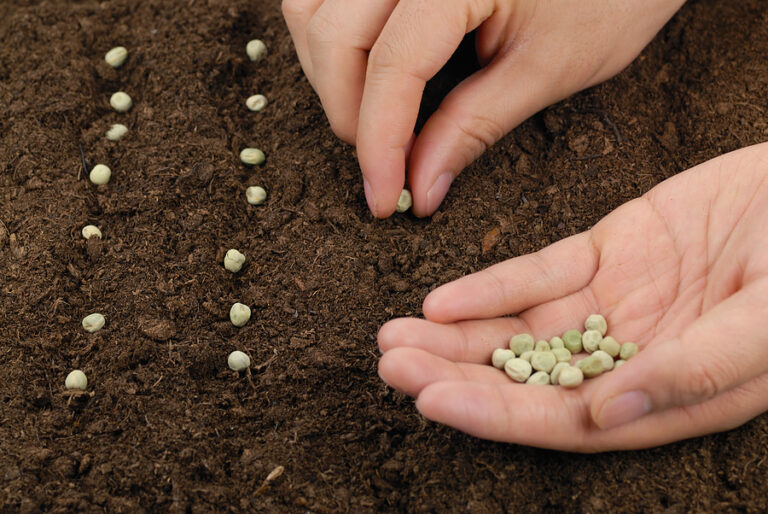The Best Southern Pea Varieties: Black-Eyed, Crowder, and Purple Hull Peas
Southern peas (cowpeas) are a cornerstone of warm-season gardens, prized for heat tolerance, drought resilience, and delicious, versatile pods. Over decades of gardening in hot California summers, I’ve found that selecting the right variety for your climate and taste preference dramatically improves yield and harvest satisfaction.
This guide shares hands-on experience with the most popular types: black-eyed, crowder, and purple hull peas, highlighting flavor, growth habits, and ideal uses.
1. Black-Eyed Peas
Description:
- Cream-colored with distinctive black eye
- Mild, nutty flavor
- Upright bush or semi-vining varieties
Growing Experience:
- Mature in 60–75 days
- Extremely heat tolerant
- Reliable for snap, shelling, or dry use
Best Use:
Shelling for succotash, fresh salads, or drying for winter storage.
2. Crowder Peas
Description:
- Often tan, brown, or speckled pods
- Sweet, earthy flavor
- Typically semi-vining
Growing Experience:
- Excellent for hot, dry summers
- Produces well in lean soils
- Pods tend to fill later in the season, extending harvest
Best Use:
Ideal for dry beans, stews, and classic southern dishes.
3. Purple Hull Peas
Description:
- Cream-colored peas inside bright purple hulls
- Slightly sweeter flavor than black-eyed peas
- Often vining, can climb supports
Growing Experience:
- Matures in about 65–70 days
- Performs well in both raised beds and containers
- Vigorous growth requires some trellising or space
Best Use:
Shelling or dry peas; visually striking in fresh dishes and gardens.
Choosing the Right Variety
- Heat & Drought: All three types excel, but black-eyed peas are most reliable under extreme heat.
- Space: Crowders and purple hulls benefit from vining support; bush black-eyed peas fit smaller gardens.
- Flavor Preference: Purple hulls for sweetness, black-eyed peas for mild nutty flavor, crowders for earthy richness.
Experience Tip:
I often plant a mix of black-eyed and purple hull peas in raised beds, staggering sowing by 2–3 weeks to extend harvest and enjoy both visual interest and flavor variety.
My Takeaway
Southern pea variety choice affects yield, flavor, and harvest timing. Based on decades of growing experience, black-eyed, crowder, and purple hull peas are all excellent for home gardens, with selection guided by taste, space, and intended use.
Southern Peas Learning Hub
Start Here:
- How to Plant, Grow, and Harvest Southern Peas: A Complete Guide – Overview and complete guide.
- Southern Peas: Essential Planting-to-Harvest Growing Tips – Tips you can use today.
Planning & Preparation
- About Southern Peas: History, Types, and How They Differ from Other Beans – Background, uses, and distinction from other legumes.
- The Best Location for Southern Peas: Soil, Sun, and Garden Bed Prep – Soil, sunlight, and bed preparation.
- When to Plant Southern Peas: Timing for Spring, Summer, and Successive Crops – Sowing schedules for peak yield.
- The Best Southern Pea Varieties: Black-Eyed, Crowder, and Purple Hull Peas – Variety selection based on climate, space, and flavor.
Planting & Early Growth
- How to Plant and Space Southern Peas for Maximum Yield – Planting depth, spacing, and row management.
- How to Grow Southern Peas in Containers: Tips for Small-Space Gardens – Container growing guidance for limited spaces.
Care & Maintenance
- How to Water and Fertilize Southern Peas for Healthy Vines and Pods – Optimal irrigation and feeding practices.
- Seasonal Care Guide for Southern Peas: Weeding, Training, and Midseason Maintenance – Midseason tasks and vine management.
- The Best Companion Plants for Southern Peas (and What to Avoid) – Planting companions for productivity and pest reduction.
Pests & Disease Management
- Southern Peas Pests and Diseases: Identification, Prevention, and Organic Controls – Recognizing problems and implementing organic solutions.
Harvesting & Preservation
- How to Harvest Southern Peas at Every Stage: Shelling, Snaps, and Dry Peas – Picking at different maturity stages.
- How to Store and Preserve Southern Peas: Freezing, Drying, and Long-Term Keeping – Preservation methods for year-round use.




